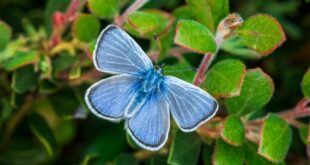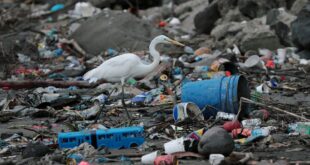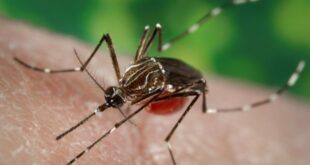Also: How Canada commutes.

Our planet is changing. So is our journalism. This weekly newsletter is part of a CBC News initiative entitled “Our Changing Planet” to show and explain the effects of climate change. Keep up with the latest news on our Climate and Environment page.
Sign up here to get this newsletter in your inbox every Thursday.
This week:
- On2Ottawa demonstrates the challenges – and dangers — of climate protests
- How Canada commutes
- Alberta scientists tracking blue-green algae blooms using satellite imagery
On2Ottawa demonstrates the challenges – and dangers — of climate protests

You may not have heard much about it, but a recently formed group called On2Ottawa is in the middle of a three-week campaign of disruption in the country’s capital, agitating for the federal government to take stronger climate action.
Since arriving on Aug. 20, the group has blocked traffic in front of the Chateau Laurier hotel, the Laurier Avenue bridge over the Rideau Canal and the Macdonald-Cartier Bridge between Ontario and Quebec. On Tuesday, a member of the group threw washable paint on a painting by Tom Thomson in the National Gallery of Canada.
Ottawa Police says 12 people have been charged with 36 criminal offences to date.
If the name doesn’t seem familiar, On2Ottawa is also behind the topless protest on stage at the Juno Awards this year and a climate action that involved tossing washable paint on a woolly mammoth statue at the Royal B.C. Museum in Victoria in March and at the prime minister’s office this spring.
On2Ottawa’s approach has upset some members of the public, even causing a few violent reactions. When the group stopped traffic on the Laurier bridge on Aug. 23, one driver got out of their car and forcibly removed protester Josh Pringle so they could drive through.
Laura Sullivan, a lead organizer with On2Ottawa, said that after the woolly mammoth demonstration in March, a number of people found her personal Facebook and other social media accounts and left messages that were “pretty brutal.”
“People are just really upset and they say things like, ‘I’m going to kill you’ or ‘I’m going to show up to your talk and murder you’ or something like that,” Sullivan said.
These experiences capture the challenge — and occasional dangers — climate activists face in getting their message out to the public.
While the efficacy of such civil disobedience tactics is often debated in the media, they can have the desired effect, said Dylan Bugden, a professor in environmental sociology at Washington State University.
“Civil disobedience can work,” he said. “It works strongest, of course, among people who are already sympathetic [to the cause]. But it can move a small number of people towards that movement.”
Bugden cautioned that to be successful, the tactics should challenge those directly responsible for the problem protesters are trying to solve, such as governments or industries.
“I think disruption that really aims at the right target is more useful,” he said. “And to me, the right target is always going to be power in society.”
On2Ottawa’s tactics are similar to those once used by Extinction Rebellion and currently employed by Just Stop Oil, which threw soup at a Van Gogh painting and disrupted a Wimbledon tennis match in London, England.
James Ozden, who runs a non-profit research group in the U.K. called Social Change Lab, has found that radical groups like Just Stop Oil have a measurable effect, in that they increase support for more moderate climate groups, whose tactics, such as marches and petitions, tend to be less disruptive.
Ozden, who previously worked with Extinction Rebellion, conducted a poll in collaboration with international market research firm YouGov before and after Just Stop Oil protests halted traffic on the M25 motorway in London. He says they found “people who had heard more about Just Stop Oil or this particular protest actually said they supported Friends of the Earth, the moderate group, even more than the people who didn’t hear about this protest.”
Social Change Lab said this was evidence of a “positive radical flank effect,” whereby disruptive tactics increase support for moderate groups in part because moderates seem more palatable by contrast.
For his part, On2Ottawa member Josh Pringle said he was willing to be arrested for protesting because there are “worse things to get arrested for than sitting in the streets for the purposes of climate justice.”
On2Ottawa has two demands. The first, according to a media release, is that in light of record wildfires this year, Canada should form “a permanent professional national firefighting agency that employs 50,000 full-time firefighters by 2024.” The second is to “implement a citizens’ assembly with legally binding power to decide how to tackle the climate and ecological crisis in less than two years.”
Michael Norton, director with Natural Resources Canada’s Canadian Forest Centre, said earlier this month there is “no specific discussion” about a dedicated national firefighting force. But he wasn’t ruling anything out.
Sullivan is skeptical. “I don’t have much trust in the government because they’ve had 40 years now to handle the climate and ecological crisis … and I think that these fires are a very strong symbol of that,” she said.
Sullivan says any inconvenience caused by On2Ottawa’s protests pales in comparison to the impact of the climate crisis.
“It’s not my goal to make anyone upset or sad or angry, but we just have to because people are going to be a lot more sad and a lot more angry when their house is on fire or when this country is on fire.”
— James Westman
Old issues of What on Earth? are here. The CBC News climate page is here.
Check out our radio show and podcast. This week: the way we care for our forests can help or hinder extreme wildfires. We head to communities working on solutions. What On Earth airs on Sundays at 11 a.m. ET, 11:30 a.m. in Newfoundland and Labrador. Subscribe on your favourite podcast app or hear it on demand at CBC Listen.
Watch the CBC video series Planet Wonder featuring our colleague Johanna Wagstaffe here.
Reader feedback
In our last issue, Brishti Basu wrote about young Canadians who are struggling with climate anxiety. Marian McCoy had this response:
“I think Dr. McCunn and other psychology professionals are missing the mark, only skimming the surface of people’s anxiety around climate change and the destruction of nature. McCunn refers to ‘ecological worrying’ as something like a nagging concern that people assuage by packing an emergency kit or removing invasive plants at a local park. She interprets climate anxiety in terms of threats to our homes or the places we work and play. But for many people, it goes much deeper. What I feel, every day, is ecological grief: a deep, unyielding despair over the loss of nature … wildlife, forests, grasslands, wetlands, birds, insects, fish … all of it, dying because of our greed and childish unwillingness to make small sacrifices for the common good and out of respect for the intrinsic beauty of nature and its right to exist.
“Although losing one’s home to a flood or wildfire would be devastating, I grieve, not just because my home and surroundings may be threatened, but more so for the loss of non-human life, regardless of my interaction with it. I know that I’m not alone in feeling this way. For many people, it’s not always just about us.”
Write us at whatonearth@cbc.ca.
Have a compelling personal story about climate change you want to share with CBC News? Pitch a First Person column here.
The Big Picture: How Canada commutes
There are clear environmental benefits to commuting via public transit or active transportation (walking, cycling), simply because they are the least-polluting ways to get around. Yet Statistics Canada figures show that as of May 2023, public transit only accounted for about 10 per cent of commuters (1.6 million people) countrywide, while active transportation accounted for roughly six per cent (960,000 people). More than eight out of 10 Canadian commuters (13.2 million) drive to work.
The COVID-19 pandemic complicated the commuting picture, as fewer people went to a physical workplace. The Statistics Canada study suggests nervousness about being infected spurred many people to avoid public transit, opting for their cars instead. Public transit use slowly increased from 2021 to 2023, but it remains below the 2016 level (12.6 per cent).

Hot and bothered: Provocative ideas from around the web
-
In another sign of how climate change can affect the global economy, drought conditions have lowered water levels near the Panama Canal to a dangerous degree, leaving hundreds of cargo ships stranded nearby. This is having a significant effect on Panama’s revenues.
- China, the world’s second-biggest economy, may have hit peak oil consumption. That’s according to Chinese fuel distributor Sinopec, which attributes the milestone to the country’s torrid adoption of electric vehicles.
-
In 1898, the takahē, a large, flightless bird native to New Zealand, was declared extinct. But in a major conservation win, this charming and enigmatic creature is returning to the wild.
Alberta scientists tracking blue-green algae blooms using satellite imagery

A team of experts is working to better understand the spread of blue-green algae in Alberta lakes by combining satellite technology with near-simultaneous water sampling.
Blue-green algae, or cyanobacteria, can form on slow-moving or stagnant water. The blooms can produce toxins that are harmful to humans, pets and wildlife. The growth of the algae can be driven by water rich in nitrogen and phosphorus.
There are currently dozens of cyanobacteria warnings issued by Alberta Health Services for lakes in the province.
The project, funded through Alberta Innovates, is a collaboration involving several groups, including Alberta Lake Management Society (ALMS), the Alberta Biodiversity Monitoring Institute (ABMI) and researcher Rolf Vinebrooke from the University of Alberta.
Six Alberta lakes are being monitored for the project — Pigeon Lake, Sylvan Lake, Wabamun Lake, Nakamun Lake, Ethel Lake and Lac la Biche — although there is hope that the data can be used to help create a model or algorithm that can be applied to other lakes.
When a satellite passes over the lake, water samples are collected at the same time to provide a clearer picture of the algae content. Unlike previous methods of water sampling, which were not always processed in a timely manner, satellite imagery can help provide a better overall picture of what’s happening in a lake.
“Blue-green algal blooms can be very, very dynamic,” said Vinebrooke, a professor in the University of Alberta’s department of biological sciences. “Satellite imagery data … can provide near real-time estimates of how bad the blooms are on a variety of different lakes.”
The researchers believe the information they gather will be important for lake management associations to get a better understanding of what’s going on, and to use that insight for phosphorus management programs to help reduce the blooms.
Vinebrooke said that once scientists have enough data, they can go back and compare it with the previous satellite images and have a more complete understanding of the blooms in the lake and be able to track trends.
“There is a long-standing question, I think, in the minds of a lot of people in Alberta and across North America, and that is whether or not these harmful algal blooms are increasing in frequency,” he said. “Or is it just that they appear to be, because people are much more environmentally aware generally, as a public?
He said “this allows you to answer that question quantitatively.”
Fiona Gregory, a geospatial data analyst at the Alberta Biodiversity Monitoring Institute, said it’s been difficult for researchers to track trends because of a lack of continuous data. Gregory, the lead of the Earth observation analysis part of the project, takes the results from the lake sampling program and compares them with the satellite imagery, working out what the relationship is and then applying the model to satellite imagery.
“At best, the sampling is only like a snapshot in time,” Gregory said. “It can only be done maybe several times a year. But with the satellite modelling, we hope to see what’s going on almost all the time throughout the season.”
While the initiative may seem straightforward, there are some logistical challenges. The satellite used for the project doesn’t pass over Alberta every day, so researchers and volunteers have a relatively narrow window to capture the data.
“The satellite that we’re using is called the Sentinel-2 satellite, and this passes over about every five days,” said Bradley Peter, executive director of ALMS. “So we’re timing our sampling of the lake and that’s often with volunteers, partners who are driving the boat. We’re co-ordinating all of those schedules to be on the lake.”
Peter noted the sampling has to be done on a clear day, without too many clouds or smoke to muddle the images.
Eventually, the data will be available through an online mapping application. The public will be able to access the information for the six lakes, and possibly other lakes in Alberta, and get accurate information about the algae blooms.
The initiative comes after the success of a similar pilot project that started in 2019 that monitored Pigeon Lake,which has its data already available online. The map shows the concentration of chlorophyll-a, which is found in algae.
AHS advises that people and pets should avoid all contact with water where a blue-green algae advisory is in place. Cyanobacteria can make people sick and can be lethal to pets.
Those who come in contact or ingest blue-green algae can experience skin irritation, sore throat, swollen lips, fever, nausea, vomiting or diarrhea. — Trevor Howlett
Stay in touch!
Are there issues you’d like us to cover? Questions you want answered? Do you just want to share a kind word? We’d love to hear from you. Email us at whatonearth@cbc.ca.
Editor: Andre Mayer | Logo design: Sködt McNalty
*****
Credit belongs to : www.cbc.ca
 Atin Ito First Filipino Community Newspaper in Ontario
Atin Ito First Filipino Community Newspaper in Ontario






